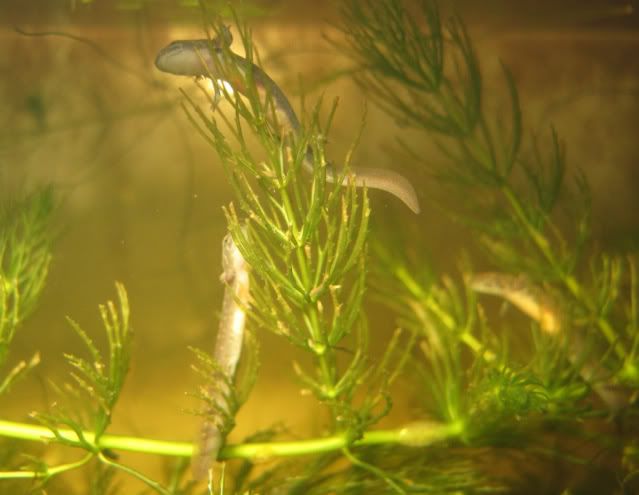Daphnia culture
#1
 Guest_Moontanman_*
Guest_Moontanman_*
Posted 01 February 2011 - 08:15 PM
Oh yeah, the bigger daphnia seem to grow when the cyclops are dormant and give way to smaller daphnia as the cyclops become active...
#2
 Guest_EricaWieser_*
Guest_EricaWieser_*
Posted 01 February 2011 - 11:11 PM
Here's a paper that might interest you: http://www.sekj.org/...z30-299-311.pdf
Edited by EricaWieser, 01 February 2011 - 11:14 PM.
#3
 Guest_gerald_*
Guest_gerald_*
Posted 02 February 2011 - 01:43 PM
#4
 Guest_mywan_*
Guest_mywan_*
Posted 02 February 2011 - 02:49 PM
http://en.wikipedia....aphnia#Lifespan
The lifespan of a Daphnia does not exceed one year and is largely temperature dependent. For example, individual organisms can live up to 108 days at 3 °C (37 °F) while some organisms live for only 29 days at 28 °C (82 °F). A clear exception to this trend is during the winter time in which harsh conditions limit the population in which females have been recorded to live for over six months. These females generally grow at slower rate but in the end are larger than ones under normal conditions.
The effect of cyclops may still play a role.
Abstract: http://plankt.oxford.../4/739.abstract
Experiments were conducted in a mesotrophic North German lake to examine the influence of metazoan zooplankton on the microbial food web. The presence and absence of Daphnia and Cyclops were manipulated in two cross-classified in situ experiments conducted in May and June 1994, during and after the clear-water phase. Ciliates had high population growth rates in the absence of predation during the clear-water phase, but had much lower growth rates 1 month later. Cyclops had strong predation effects on both Daphnia and ciliates. During the clear-water phase, manipulating metazooplankton abundance resulted in shifting the algal grazer community to either primarily metazoans or ciliates, but did not alter the final chlorophyll a concentration. After the clear-water phase, Cyclops had a negative effect on picoautotroph abundance, possibly due to reduced nutrient recycling resulting from the suppression of ciliates by Cyclops. Daphnia had both direct predation and indirect enhancement effects on bacteria, dependent on Daphnia biomass. These experiments indicate that while multiple strong links exist between the classic and microbial food webs, the net effect is not necessarily a clear trophic cascade from metazoan zooplankton to bacteria.
#5
 Guest_mikez_*
Guest_mikez_*
Posted 02 February 2011 - 04:09 PM
Recently I obtained some twolined salamander larvae from a spring seep buried under 2 feet of snow and decided to grow them out in the tank. On close examination I found the mulm was crawling with scud and cyclops were not plentiful but present in decent number. No daphnia had been seen for a very long time - until I moved the tank to a sunny window. Now I can see small daphnia are starting to get ahead of the cyclops. My theory was the sunny window triggered some dormant daphnia eggs.
Not surprisingly, the sallie larvae like their new home.

1 user(s) are reading this topic
0 members, 1 guests, 0 anonymous users







